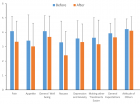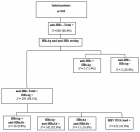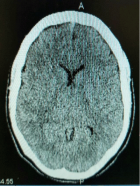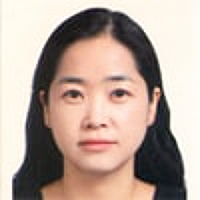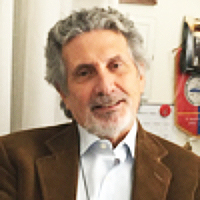Abstract
Review Article
Forensic Science in Pediatric Dentistry: Collect Preserve & Analyse: A Review
Pallavi Mahesh*
Published: 23 April, 2025 | Volume 9 - Issue 1 | Pages: 037-040
Dentistry has much to offer in the detection and solution of crime or civil proceedings. Forensic dentistry requires an interdisciplinary knowledge of dental science, and it is the role of the Forensic Odontologist to establish a person's identity. Teeth, with their physiologic variations, pathosis record information that remains throughout life and beyond. Forensic Odontology has an important role in the recognition of abuse among children. Teeth may also be used as a weapon against children, and physical evidence such as DNA, bite marks, fingerprints may objectively link suspects to a crime and develop important investigative leads. Gender identification and sex determination by analyzing the pulp tissue in primary teeth can be regarded as an effective tool in providing valuable forensic information. The rights of children and their aspirations are of paramount importance, and the Pediatric dentist can contribute immensely to the field of Forensic Odontology in providing justice to these unfortunate children.
Read Full Article HTML DOI: 10.29328/journal.jfsr.1001078 Cite this Article Read Full Article PDF
References
- Phillips M. The role of forensic dentistry in South Africa. Med Law. 1993;12(6-8):487-91. Available from: https://pubmed.ncbi.nlm.nih.gov/8183057/
- Syrjanen SM, Sainio. Forensic dentistry—recent development towards an independent discipline in modern dentistry. Proc Finn Dent Soc. 1990;86(3-4):157-70. Available from: https://pubmed.ncbi.nlm.nih.gov/2094849/
- Dinesh KT. Journal of Oral and Maxillofacial Pathology. 2017;8(2):136-8.
- Ganswindt M, Ehrlich E, Klostermann P, Troike WG, Schneider V. Bone finds: a challenge to forensic science. J Leg Med. 2003;(1):382-5. Available from: https://doi.org/10.1016/s1344-6223(02)00137-2
- Whittake DK, Llewelyn DR, Jones RW. Sex determination from necrotic pulpal tissue. Br Dent J. 1975 Nov 18;139:403-5. Available from: https://doi.org/10.1038/sj.bdj.4803645
- Davis EC, Ireland EJ, Carr R. Implementations of forensic dentistry in criminal investigations. Eur Sci J. 2014;10:196-9. Available from: https://doi.org/10.19044/esj.2014.v10n24p%25p
- Monika B, Ann-KZ, Jochen H, Katja P. Forensic dental age estimation: development of new algorithm based on the minimal necessary databases. J Pers Med. 2022;12:1280. Available from: https://doi.org/10.3390/jpm12081280
- Atreja G. Cheiloscopy and palatoscopy. In: Textbook of Forensic Odontology. India: Jaypee Brothers Medical Publishers; 2013;155-68. Available from: https://www.jaypeedigital.com/book/9789350257227/chapter/ch7
- Vinutha YJ, Krishnapriya V, Shilpa G, Vasanti D. Forensic dentistry: a pedodontist’s perspective. J Med Radiol Pathol Surg. 2015;(1):8-14. Available from: http://dx.doi.org/10.15713/ins.jmrps.9
- Sharma G, Yadav D, Singh H, Aggarwal AD, Sandhu R. Bite mark analysis: an important tool in crime investigation. J Indian Acad Forensic Med. 2006;28:69-91. Available from: http://dx.doi.org/10.1177/0971097320060209
- Stavrianos C, Tatsis D, Stavrianou P, Karamouzi A, Mihail G. Intercanine distance as a recognition method of bite marks induced at cases of child abuse. Res J Biol Sci. 2011;6:25-9. Available from: http://dx.doi.org/10.3923/rjbsci.2011.25.29
Figures:
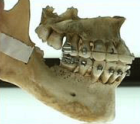
Figure 1
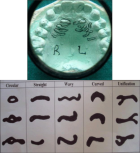
Figure 2
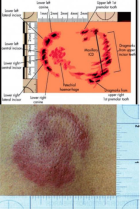
Figure 3
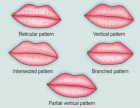
Figure 4
Similar Articles
-
Poly-dopamine-Beta-Cyclodextrin Modified Glassy Carbon Electrode as a Sensor for the Voltammetric Detection of L-Tryptophan at Physiological pHMohammad Hasanzadeh*,Nasrin Shadjou,Sattar Sadeghi,Ahad Mokhtarzadeh,Ayub karimzadeh. Poly-dopamine-Beta-Cyclodextrin Modified Glassy Carbon Electrode as a Sensor for the Voltammetric Detection of L-Tryptophan at Physiological pH . . 2017 doi: 10.29328/journal.jfsr.1001001; 1: 001-009
-
WMW: A Secure, Web based Middleware for C4I Interoperable ApplicationsNida Zeeshan*. WMW: A Secure, Web based Middleware for C4I Interoperable Applications. . 2017 doi: 10.29328/journal.jfsr.1001002; 1: 010-017
-
Associations of Burnout, Secondary Traumatic Stress and Individual Differences among Correctional Psychologists`Irina G. Malkina-Pykh*. Associations of Burnout, Secondary Traumatic Stress and Individual Differences among Correctional Psychologists`. . 2017 doi: 10.29328/journal.jfsr.1001003; 1: 018-034
-
Anatomical Distribution of Intramuscular LipomasN K Sferopoulos*. Anatomical Distribution of Intramuscular Lipomas. . 2017 doi: 10.29328/journal.jfsr.1001004; 1: 035-039
-
Comparison of Vitreous Protein Profiles of Rabbits subjected to Acute Carbon Monoxide poisoning and normal animal after deathAgoro ES*,Akubugwo EI,Chinyere GC,Samuel R. Comparison of Vitreous Protein Profiles of Rabbits subjected to Acute Carbon Monoxide poisoning and normal animal after death. . 2017 doi: 10.29328/journal.jfsr.1001005; 1: 040-045
-
The Effect of Cement and wrapping on the Decomposition rate of the Rabbit CarcassesLai Poh Soon*,Khoo Lay See,Nazni Wasi Ahmad,Azlina Zulkapli,Nurul Kharmila Abdullah,Mohd Shah Mahmood,Ahmad Hafizam Hasmi. The Effect of Cement and wrapping on the Decomposition rate of the Rabbit Carcasses. . 2017 doi: 10.29328/journal.jfsr.1001006; 1: 046-062
-
Potter Syndrome: A case studyAnestakis D*,Konstantinidou,Nikolaou A,Moumou G,Karakasi MV,Pavlidis P,Chatzifotiou E. Potter Syndrome: A case study. . 2017 doi: 10.29328/journal.jfsr.1001007; 1: 063-067
-
Organic compositional analysis of propellant powders using monolithic material sorption extraction (MSSE)-a feasibility studyJason W Birkett*,Ellen Goudsmits,George P Sharples. Organic compositional analysis of propellant powders using monolithic material sorption extraction (MSSE)-a feasibility study . . 2017 doi: 10.29328/journal.jfsr.1001008; 1: 068-076
-
Unrecognized myocardial infarction in the elderlyInge Morild*,Bjorn Maehle,Peer K Lilleng,Haakon H Eilertsen. Unrecognized myocardial infarction in the elderly. . 2017 doi: 10.29328/journal.jfsr.1001009; 1: 077-086
-
Enclosure asphyxia as a cause of death in 3 Nigerian children trapped at the boot of car-Case reports and review of literatureMartin A Nzegwu*,FMCPath Nig,DB Olusina Francis Ikechukwu Ukekwe,Victor Nzegwu. Enclosure asphyxia as a cause of death in 3 Nigerian children trapped at the boot of car-Case reports and review of literature. . 2017 doi: 10.29328/journal.jfsr.1001010; 1: 087-091
Recently Viewed
-
Treatment of antibiotic-resistant bacteria by nanoparticles: Current approaches and prospectsTigabu Bekele*,Getachew Alamnie. Treatment of antibiotic-resistant bacteria by nanoparticles: Current approaches and prospects. Ann Adv Chem. 2022: doi: 10.29328/journal.aac.1001025; 6: 001-009
-
High-Performance Liquid Chromatography (HPLC): A reviewAbdu Hussen Ali*. High-Performance Liquid Chromatography (HPLC): A review. Ann Adv Chem. 2022: doi: 10.29328/journal.aac.1001026; 6: 010-020
-
A reaction and movement of vacancy and solute atom in metals under elastic tensile stressXu Tingdong*. A reaction and movement of vacancy and solute atom in metals under elastic tensile stress. Ann Adv Chem. 2022: doi: 10.29328/journal.aac.1001027; 6: 021-022
-
Bio-inspired fabrication of zinc oxide nanoparticles: Insight into biomedical applicationsAtta Ullah Khan*,Muhammd Ilyas,Doaa Zamel,Suliman Khan,Abbas Ahmad,Fazeela Kaneez,Sakina Abbas,Syeda Armana Zaidi,Hikmat Ullah,Faisal Adnan,Shehryar Khan,Fazal Rahman,Subhan Ullah Khan. Bio-inspired fabrication of zinc oxide nanoparticles: Insight into biomedical applications. Ann Adv Chem. 2022: doi: 10.29328/journal.aac.1001028; 6: 023-037
-
Viscosity-sensitive mitochondrial fluorescent probes and their bio-applicationsMengmeng Wei,Rui Yang*. Viscosity-sensitive mitochondrial fluorescent probes and their bio-applications. Ann Adv Chem. 2022: doi: 10.29328/journal.aac.1001029; 6: 038-042
Most Viewed
-
Evaluation of Biostimulants Based on Recovered Protein Hydrolysates from Animal By-products as Plant Growth EnhancersH Pérez-Aguilar*, M Lacruz-Asaro, F Arán-Ais. Evaluation of Biostimulants Based on Recovered Protein Hydrolysates from Animal By-products as Plant Growth Enhancers. J Plant Sci Phytopathol. 2023 doi: 10.29328/journal.jpsp.1001104; 7: 042-047
-
Sinonasal Myxoma Extending into the Orbit in a 4-Year Old: A Case PresentationJulian A Purrinos*, Ramzi Younis. Sinonasal Myxoma Extending into the Orbit in a 4-Year Old: A Case Presentation. Arch Case Rep. 2024 doi: 10.29328/journal.acr.1001099; 8: 075-077
-
Feasibility study of magnetic sensing for detecting single-neuron action potentialsDenis Tonini,Kai Wu,Renata Saha,Jian-Ping Wang*. Feasibility study of magnetic sensing for detecting single-neuron action potentials. Ann Biomed Sci Eng. 2022 doi: 10.29328/journal.abse.1001018; 6: 019-029
-
Pediatric Dysgerminoma: Unveiling a Rare Ovarian TumorFaten Limaiem*, Khalil Saffar, Ahmed Halouani. Pediatric Dysgerminoma: Unveiling a Rare Ovarian Tumor. Arch Case Rep. 2024 doi: 10.29328/journal.acr.1001087; 8: 010-013
-
Physical activity can change the physiological and psychological circumstances during COVID-19 pandemic: A narrative reviewKhashayar Maroufi*. Physical activity can change the physiological and psychological circumstances during COVID-19 pandemic: A narrative review. J Sports Med Ther. 2021 doi: 10.29328/journal.jsmt.1001051; 6: 001-007

HSPI: We're glad you're here. Please click "create a new Query" if you are a new visitor to our website and need further information from us.
If you are already a member of our network and need to keep track of any developments regarding a question you have already submitted, click "take me to my Query."






